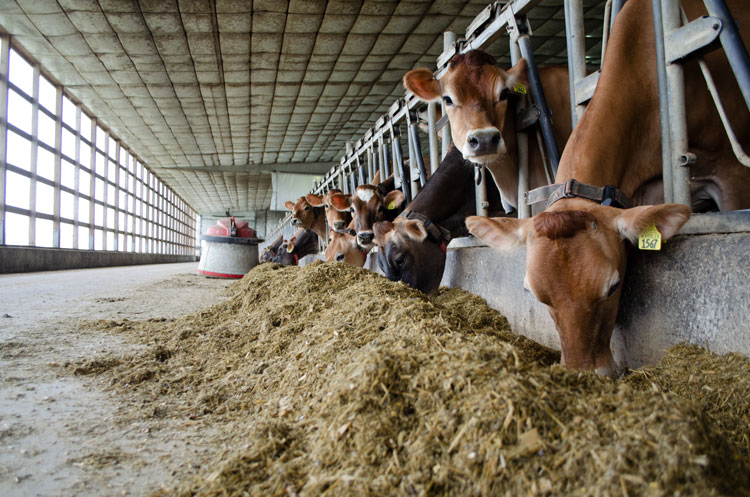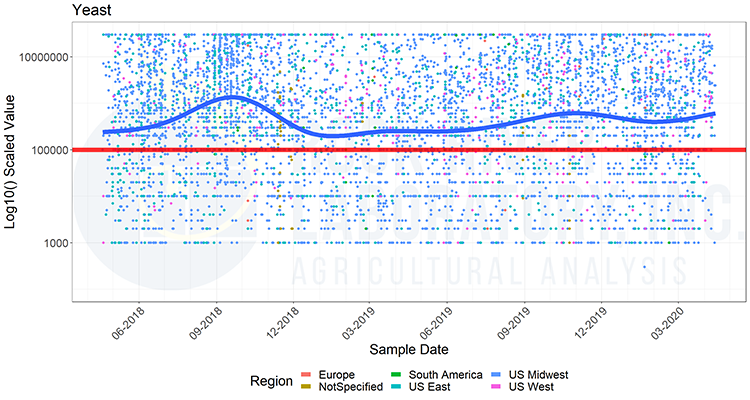
While the world changes, dairy cattle diets are also evolving for many. Several dairies have considered, or are actively, feeding unpasteurized milk back to the herd to avoid wasting a nutritious product. For others, diets have changed in response to dwindling forage inventories.
In both cases, new ingredients are being introduced to total mixed rations (TMR). We will manage through diet changes with help and guidance from nutritionists. But with new feeds, and wet ones in particular, we need to step up our management to curb potential feed hygiene issues. Increased water activity in feeds (due to rainfall or adding water/milk to the diet) will raise the potential for microbial growth and feed spoilage. Wild, spoilage yeast species are the first microbial contaminant to take hold in a spoiling TMR.
Yeast are prevalent throughout the U.S., with humid and wet climates being more prone to yeast challenges. Thanks to global positioning system (GPS) coordinates alongside many FeedScan smartphone app submitted samples the past six months, we’re able to start picturing spoilage yeast results relative to the location the sample was submitted.
Across the U.S. in Figure 1, the red dots correspond to samples with more than 1 million colony-forming units of yeast per gram (cfu/g) of feed or TMR. For reference, grab a hold of the top knuckle on your pinky finger — this represents about 1-gram worth of feed volume. Now think about 1 million yeast colonies on your top pinky knuckle.
Back to Figure 1, there are pretty clear “hot spots” of yeast levels throughout the U.S., and spoilage yeast species may also be coming out of refrigeration over the past month. Many feeds harvested last fall were cold or frozen. These wet or delayed crops may have had some level of wild yeast present but have been under refrigeration. Though in the past month, yeast counts are coming through at substantially greater levels than was the case a year ago (Figure 2). With both the regional and temporal trends in mind, consider paying close attention to feed and TMR heating in the coming weeks and months.


One of the best ways to check for yeast growth is checking temperatures at the feedbunk and doesn’t involve much cost, if any. Think of this as checking your diet’s temperature, and any temperatures greater than roughly 10°F above ambient temperature are indicative of microbial growth and spoilage. TMR or feed temperatures can be checked with a digital thermometer (several inches under the surface), an infrared thermometer (after kicking away the top several inches of TMR), or a more advanced infrared camera.
If you are feeding milk back to your dairy herd, adding water to the diet, or bringing in valuable wet commodity feeds, monitor bunk temperatures several times per week. If you find your forage or TMR is heating, consult with your nutritionist and try to trace the yeast source. Consider adding preservative acid to the causative feed or TMR to limit spoilage at the feedbunk and continue serving your herd a healthy diet.
Finally, and most importantly, I wanted to say thank you to all those of you who produce milk and dairy products for us. And also, thank you to those advising and supporting our dairy producers through these turbulent times. I hope warmer temperatures and sunshine bring a slight boost to everyone’s morale.








